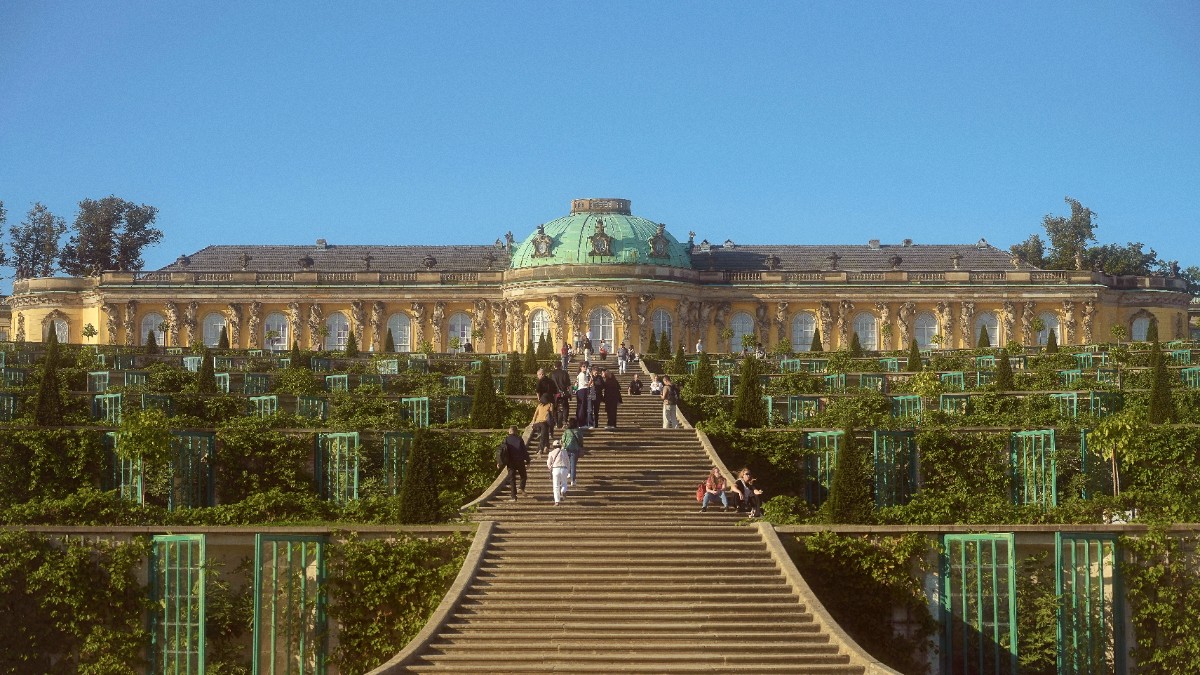
Brandenburg, Germany
The city's topography is largely flat. This characteristic reflects its position within the expansive North German Plain. This flat terrain makes Potsdam a pleasant place for walking and cycling. You can easily traverse its parks and reach its various attractions on foot or by bicycle. The natural setting, with its abundant greenery and water, gives Potsdam a relaxed, almost resort-like feel, even with its urban core. The proximity to Berlin means easy access to a major international hub, but Potsdam maintains its own peaceful identity.
The city's location on the edge of a larger forest and lake district provides a gateway to further natural exploration in the Brandenburg region. The air feels fresh here, and the scenery changes beautifully with each season. In spring, flowers bloom in the palace gardens. Summer brings lush green landscapes and warm days perfect for lake activities.
Autumn transforms the trees into a riot of color. Even winter, with its crisp air and occasional snow, offers a quiet charm. The city’s planning integrates its natural elements. Green spaces abound, and the waterways are not just scenic features but active parts of local life. You will see sailboats, kayaks, and passenger ferries regularly. This blend of historic architecture and open natural spaces gives Potsdam a special balance. It feels both grand and approachable, urban and deeply connected to nature.
Potsdam's history intertwines with the Prussian monarchy and the German Empire. From the 17th century until 1918, Potsdam served as a residential city for Prussian kings and, later, German Emperors. This long royal association shaped the city, filling it with magnificent palaces, extensive gardens, and refined architecture. Frederick the Great, in particular, left his mark. He envisioned Potsdam as a city of beauty and intellect. He commissioned the construction of Sanssouci Palace, his summer residence, a masterpiece of Rococo architecture. This palace, along with its sprawling park, became a personal retreat and a stage for his intellectual pursuits. Under his rule, Potsdam became an important hub for science and the arts, drawing scholars, artists, and architects from across Europe. The city's landscape reflects Frederick's vision, with carefully planned vistas, ornate fountains, and classical structures. The influence of French, Dutch, and Italian architectural styles is evident throughout the city, reflecting the cosmopolitan tastes of its royal patrons.
Potsdam's historical importance extends into the 20th century, notably during the Cold War. In 1945, Cecilienhof Palace became the site of the Potsdam Conference. Here, Allied leaders – Joseph Stalin, Harry S. Truman, and Winston Churchill (later Clement Attlee) – met to decide the post-war fate of Germany and Europe. This conference produced agreements that established the occupation zones and outlined the path for de-Nazification and demilitarization. The decisions made at Cecilienhof had profound and lasting effects on the global political landscape. You can visit the very rooms where these discussions took place, gaining a powerful sense of history. During the Cold War, Potsdam became a border city, located just outside West Berlin. The Glienicke Bridge, connecting Potsdam with Berlin, gained international notoriety as a spy exchange point between East and West. This bridge, often called the "Bridge of Spies," witnessed high-profile exchanges of captured agents. The bridge stood as a tangible symbol of the Cold War divide. Potsdam's location positioned it as a distinct intersection of East and West, witnessing both espionage and the everyday lives of people living under different political systems.
Frederick the Great's Rococo summer residence.
Site of the pivotal 1945 Potsdam Conference.
The famed "Bridge of Spies" during the Cold War.
Reconstructed as the Brandenburg state parliament seat.
A unique neighborhood built for Dutch artisans.
The city also holds stories of more recent transformations. After German reunification, Potsdam underwent extensive restoration. Many of its historic buildings, damaged during World War II or neglected during the GDR era, have been meticulously rebuilt or renovated. The Potsdam City Palace, once destroyed, stands reconstructed today as the seat of the Brandenburg state parliament. This blend of preserved history and modern restoration gives Potsdam a layered character. It honors its past while embracing its present.
Potsdam’s historical narrative weaves together royal grandeur, artistic patronage, and superpower politics. Every palace, park, and bridge tells a part of this story. This makes the city a compelling destination for those seeking to connect with European history on a deep level. Its serene setting belies a past filled with momentous events.
The diverse architectural styles found throughout Potsdam reflect centuries of influence. From the Rococo charm of Sanssouci to the unique red-brick buildings of the Dutch Quarter, visitors experience a living museum of European design. The city's dedication to preserving and restoring these structures ensures their stories continue for generations.
Potsdam offers a glimpse into a rich history, from Prussian royalty to Cold War espionage. Each visit brings new discoveries.
Potsdam, Brandenburg's capital, offers a captivating blend of natural beauty and historical grandeur. It sits southwest of Berlin, along the Havel River, amidst a network of picturesque lakes.
The city's flat terrain makes walking and cycling a pleasure, notably through its vast, manicured parks. Historically, Potsdam served as the royal residence for Prussian kings, a legacy visible in its numerous palaces like Sanssouci and Neuer Garten.
Vast parks, botanical gardens, and the Havel river system shape the city's green appeal.
Home to magnificent palaces and residences of Prussian kings.
The site of the Potsdam Conference and Cold War spy exchanges.
Potsdam's allure stems from its remarkable array of UNESCO World Heritage sites, blending natural beauty with architectural masterpieces. These sites bear witness to centuries of history, from royal grandeur to pivotal moments of global significance.